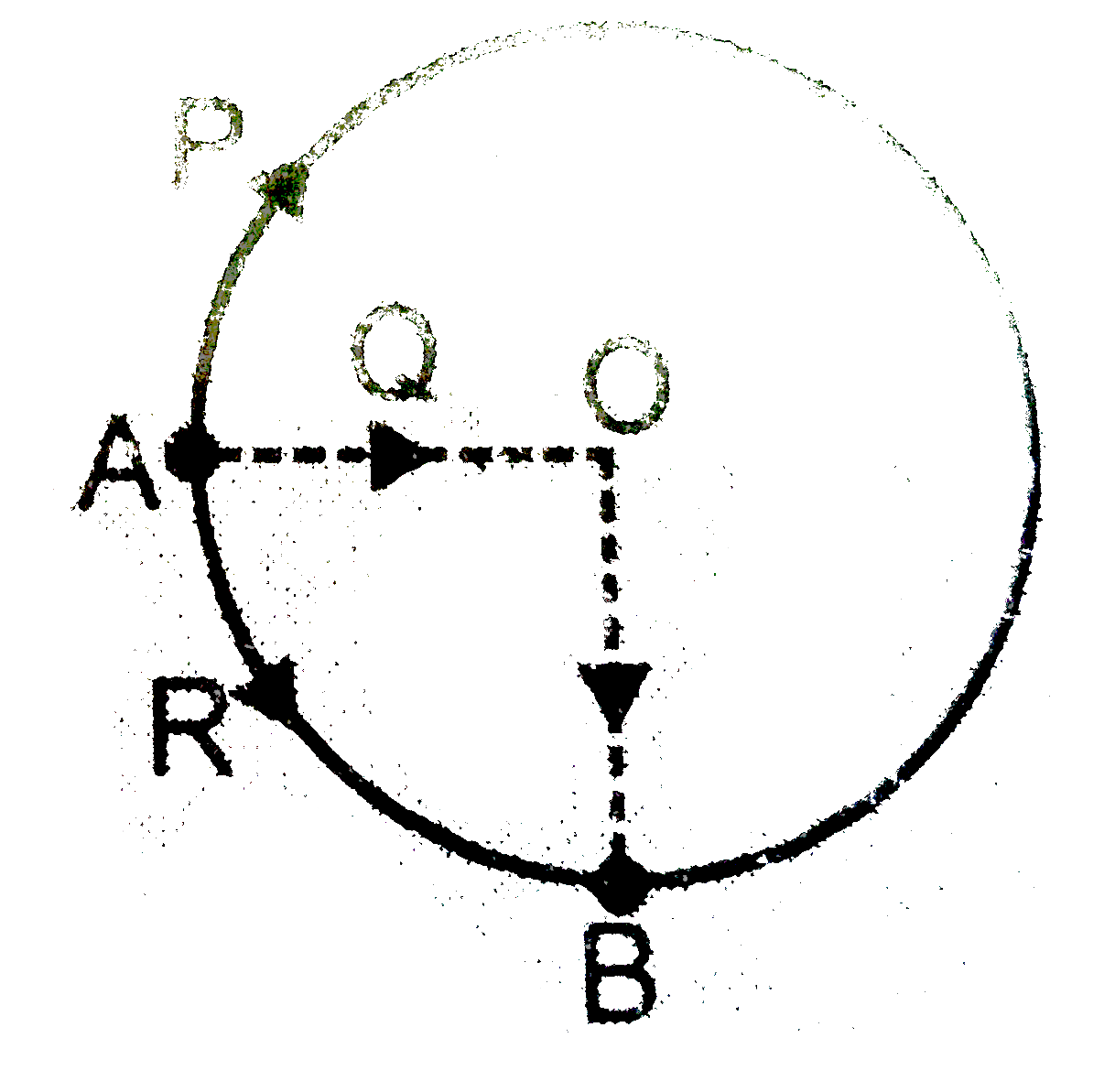A train accelerates from rest at a constant rate α a for distance and time . After that is retards at constant rate for distance and time and comes to the rest. Which of the following relation is correct:-Solution in Gujrati
x1/x2 = α/ β= t1/t2
x1/x2 = β/ α = t1/t2
x1/x2 = β/ α = t2/t1
x1/x2 = α/ β = t2/t1
The correct Answer is:(i) A, B (ii) A, B (iii) B, A (iv) same (v) B, A, once
By observing the graph, position of A (Q) is greater than position of B (P) i.e. B lives farther than a and also the slope of x-t curve for A & B gives their velocities
Topper's Solved these Questions
- MOTION IN A PALNEBOOK - ALLEN CHAPTER - MOTION IN A PALNEEXERCISE - Exercise-04[B]
14 Videos
- MOTION IN A PALNEBOOK - ALLEN CHAPTER - MOTION IN A PALNEEXERCISE - Exercise-05 [A]
11 Videos
- MOTION IN A PALNEBOOK - ALLEN CHAPTER - MOTION IN A PALNEEXERCISE - Comprehension#7
3 Videos
- KINEMATICS-2DBOOK - ALLEN CHAPTER - KINEMATICS-2DEXERCISE - Exercise (O-2)
47 Videos
- NEWTON'S LAWS OF MOTION & FRICTIONBOOK - ALLEN CHAPTER - NEWTON'S LAWS OF MOTION & FRICTIONEXERCISE - EXERCISE (JA)
4 Videos
Similar Questions
A boat is moving with a velocity 3ˆi+4ˆj with respect to ground. The water in the river is moving with a velocity −3ˆi−4ˆj with respect to ground. The relative velocity of the boat with respect to water is.
View SolutionA man wishes to swim across a river 0.5km. wide if he can swim at the rate of 2 km/h. in still water and the river flows at the rate of 1km/h. The angle (w.r.t. the flow of the river) along which he should swin so as to reach a point exactly oppposite his starting point, should be:-
View SolutionA graph between the square of the velocity of a particle and the distance(s) moved is shown in figure. The acceleration of the particle in kilometers per hour square is:-

View SolutionA particle is moving in xy-plane .At certain instant the components of its velocity and acceleration are as follows ux=3m/s,uy=4m/s,ax=2m/s2anday=1m/s2. The rate of change of speed at this moment is
View SolutionA piece of wire is bent in the shape of a parabola y=kx2 (y-axis vertical) with a bead of mass m on it. The bead can slide on the wire without friction. It stays at the lowest point of the parabola when the wire is at rest. The wire is now accelerated parallel to the x-axis with a constant acceleration a. The distance of the new equilibrium position of the bead, where the bead can stay at rest with respect to the wire, from the y-axis is:
View SolutionA train accelerates from at the constant rate b for time t_(2) at a constant rate a and then it retards at the comes to rest. Find the ratio t_(1) // t_(2) .
View SolutionA train accelerates from rest at a constant rate a for distance x_(1) and time t_91) . After that is retards at constant rate beta for distance x_(2) and time t_(2) and comes to the rest. Which of the following relation is correct:-
View Solutionएक गाड़ी स्थिर अवस्था से दूरी x1 समय t1 तक नियत दर α से त्वरित होती है तथा फिर दूरी x2 समय t2 में βदर से मंदित होकर विराम अवस्था में आती है सही सम्बन्ध है :
View SolutionA car accelerates from rest at a constant rate of 2ms^(-2) for some time. Then, it retards at a constant rete of 4ms^(-2) and comes and rest. If the total time for which it remains in motion is 3 s, Then the total distance travelled is
View SolutionA car accelerates from rest at constant rest a α t for same time after which it deaccelerates at constant rate β to come to rest. If total time taken is t then distance covered is given by :
View SolutionAn elevator accelerates from rest at a constant rate α for time interval t1 and travels a distance S1 It them retards at a constant rate β for time interval t2 and finally comes to rest after travelling a distance S2 during its retardation Show that:
S1S2=t1t2=βα.
View SolutionA train moves from rest with acceleration alpha and in time t_(1) covers a distance x. It then decelerates rest at constant retardation beta for distance y in time t_(2) . Then
View SolutionA scooter accelerates from rest for time t_(1) at constant rate a_(1) and then retards at constant rate a_(2) for time t_(2) and comes to rest. The correct value of (t_(1))/(t_(2)) will be :-
View SolutionA car accelerates from rest at a constant rate a for some time after which it retards at a constant rate to come to rest. If the time elapsed is t, maximum velocity reached is
View SolutionA train accelerates from rest at a constant rate α for some time and then it retards to rest at the constant rate β. If the total distance covered by the train is s, then the velocity of the train is
View Solution
